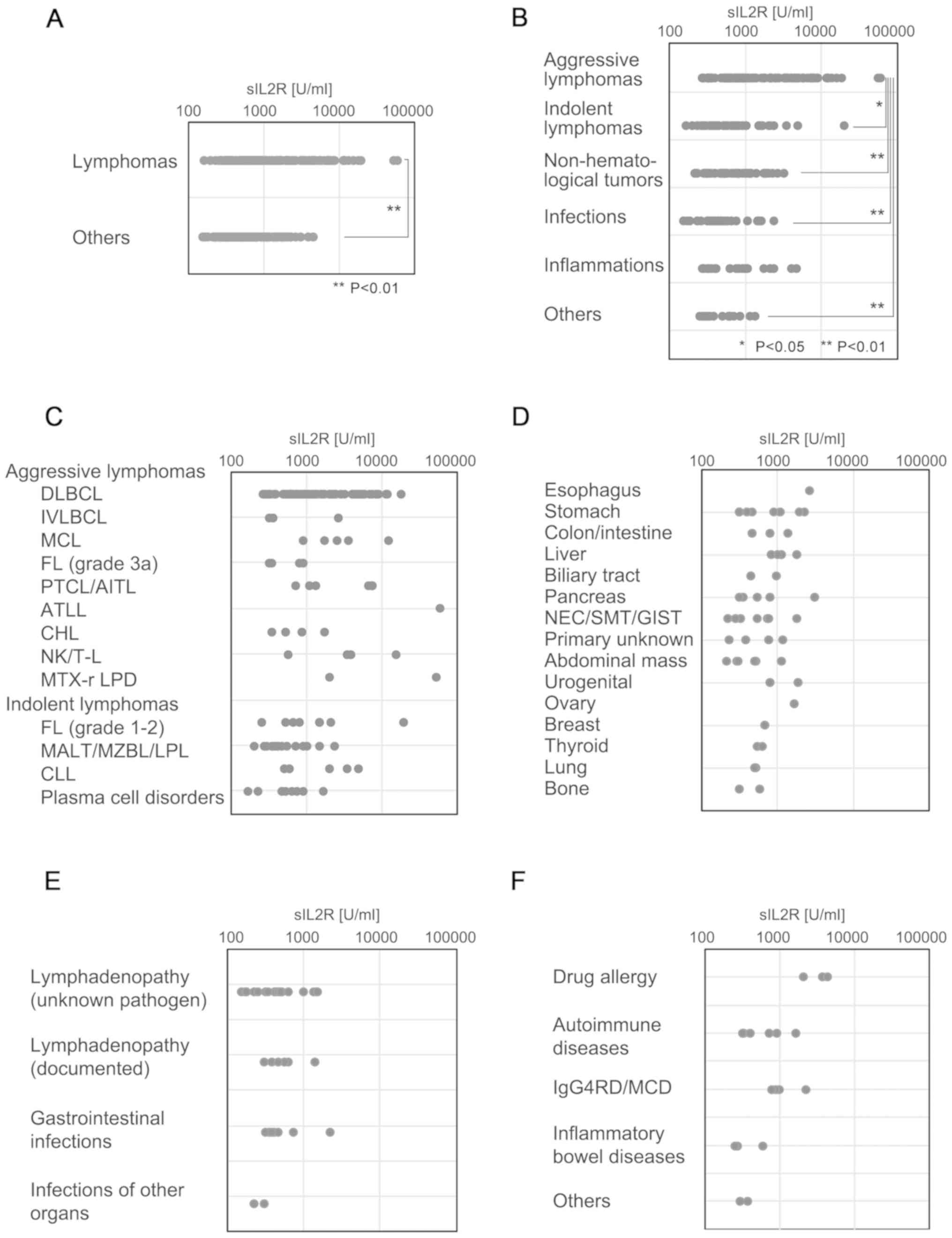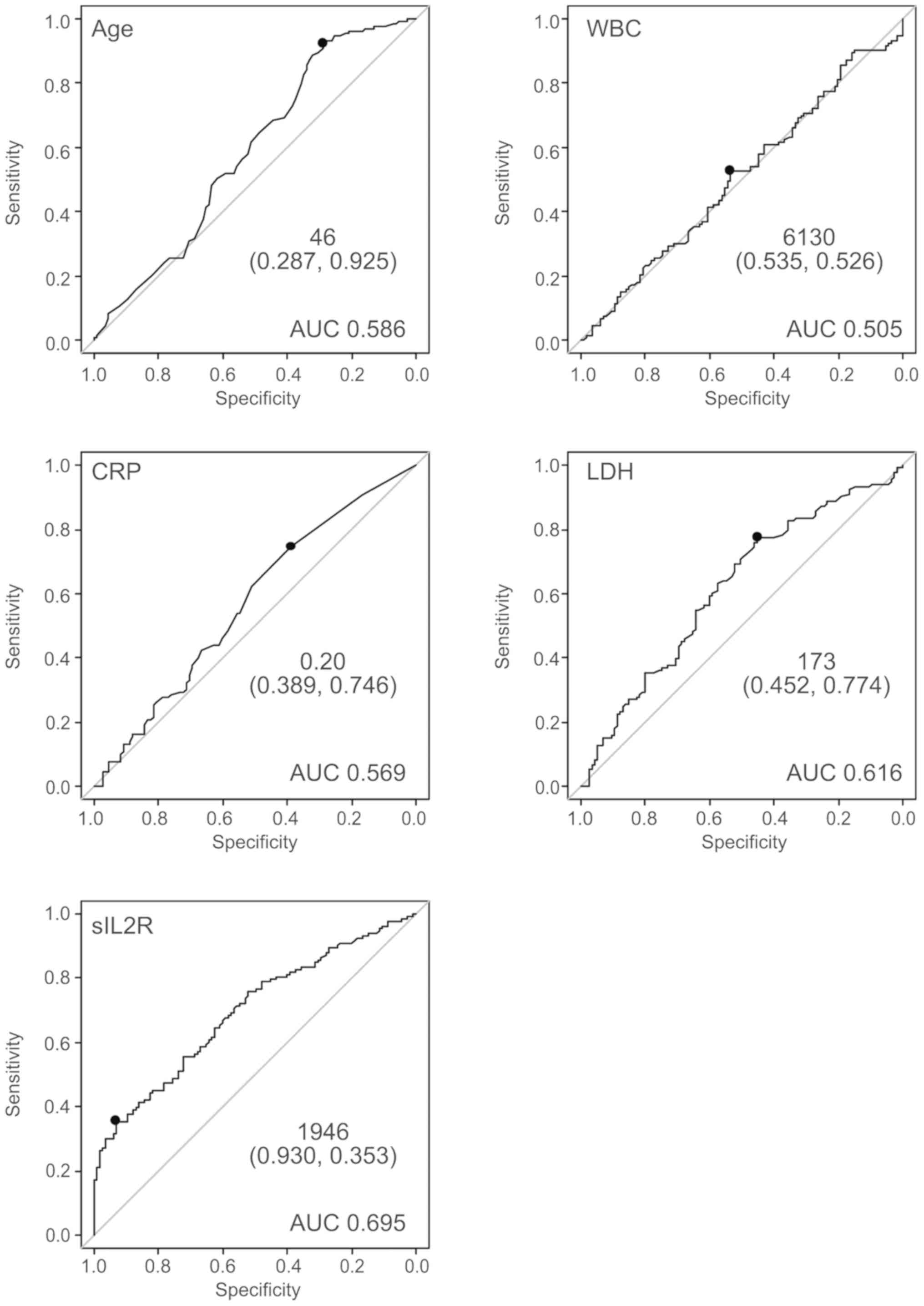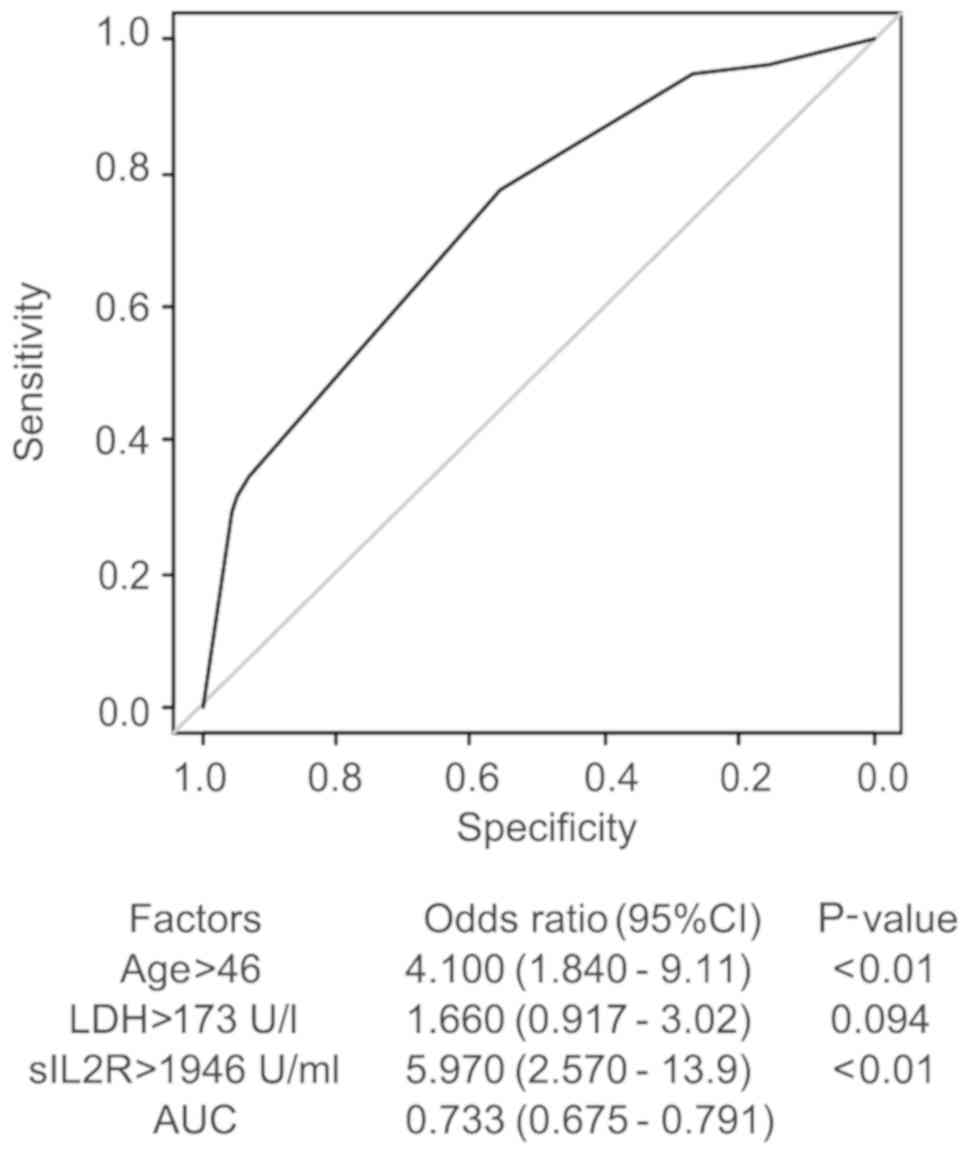Serum soluble interleukin‑2 receptor levels for screening for malignant lymphomas and differential diagnosis from other conditions
- Authors:
- Published online on: September 11, 2019 https://doi.org/10.3892/mco.2019.1922
- Pages: 474-482
-
Copyright : © Murakami et al. This is an open access article distributed under the terms of Creative Commons Attribution License [CC BY 4.0].
Metrics:
Total
Views: 0 (Spandidos Publications: | PMC Statistics:
)
Total PDF Downloads: 0 (Spandidos Publications: | PMC Statistics:
)
Abstract
The serum soluble interleukin 2 receptor (sIL2R) level is elevated in patients with most types of lymphoid neoplasms, and is also elevated in patients with solid tumors or reactive conditions, such as severe inflammation. To evaluate the diagnostic significance of sIL2R levels for the screening and differential diagnosis of lymphomas, data from 248 consecutive adult patients with suspected lymphoma were retrospectively analyzed in order to determine its diagnostic characteristics and the clinical parameters that affect diagnosis. In 133 patients with aggressive or indolent lymphomas or related neoplasms, the sIL2R level was higher (median: 920 U/ml, standard deviation: 7,312 U/ml) compared with that of 115 patients with other diagnoses (median: 520 U/ml, standard deviation: 727 U/ml), including solid tumors, infection, inflammation, and others. When the cutoff value of sIL2R was 1,104 U/ml, the specificity was 80%, at which point lymphoma was suspected. When the threshold levels were increased from 1,500 to 2,000 U/ml, the specificity increased from 87 to 93%, with the positive likelihood ratio increasing from 2.99 to 4.97, strongly suggesting the diagnosis of lymphoma. The receiver operating characteristic curve for prediction of lymphoma by sIL2R revealed that the area under the curve was 0.695. The curve was nearest to the left corner of the plot when the threshold was 1,946 U/ml; at this point, the sensitivity, specificity and positive likelihood ratio were 35%, 93% and 5.06, respectively. Multivariate analysis demonstrated that an age >46 years and lactate dehydrogenase level >173 U/l appeared to increase the risk of malignant lymphoma diagnosis. Although sIL2R appears to be a less specific marker for the screening of lymphomas, its detection at higher levels strongly suggests the diagnosis of lymphomas. Therefore, sIL2R may be more useful compared with any other parameter for lymphoma diagnosis, provided other false‑positive conditions are taken into consideration.













